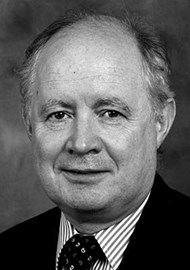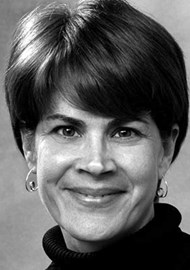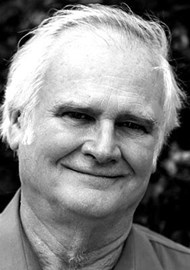As audiology and ENT professionals we all have an inkling about the prevalence and impact of hearing loss, but the true gravity of the situation is even greater than previously thought…
It may seem hard to believe, but in the world today there are half a billion people with disabling hearing loss (defined as an average loss across frequencies of 35dB or worse in the better-hearing ear). And the great majority of these individuals live in low- and middle-income countries (LMICs) where services for hearing impaired individuals are either non-existent or rudimentary.
Hearing loss, by virtue of its prevalence and impact on life-quality, is now among the top five causes of years lived with disability (YLDs), a metric to assess the impact of a health condition globally as well as to enable direct comparisons among different health conditions.
These findings stem from a recently commissioned review we undertook for The Lancet on global hearing health care [1]. Inputs to the review included data from the most recent Global Burden of Disease (GBD) study, the GBD 2015 [2], that indicate that the prevalence and number of YLDs due to hearing loss are far higher than before. For example, the half billion figure for disabling hearing loss is derived from the GBD 2015 data (see the online appendix to The Lancet article for details) and is far higher than the previous and often-cited figure of 360 million published by the WHO in 2012 [3]. Although there are differences in the definition of disabling hearing loss between the GBD and WHO studies (the definition for the WHO study was 30 dB or worse for children and 40 dB or worse for adults), those differences alone cannot account for the dramatic increase in prevalence. Instead, most of the increase is due to a higher world population; the increased life-expectancy in almost all world regions; greater exposure to damagingly loud sounds (both in the work-place and socially); and the increasing prevalence of hearing loss with age beyond age 20 and the particularly high prevalence beyond age 40.
“Hearing healthcare (HHC) professionals in particular are uniquely positioned to provide evidence-based advocacy and to help implement the changes necessary to increase the provision of HHC across the globe.”
Other data also indicate a prevalence of half a billion or higher for disabling hearing loss [4], along with a sharp and monotonic growth in prevalence from 1985 when the first estimates for all world regions were published [5]. Currently, 6.8% of the world’s population has disabling hearing loss. For all hearing loss, from mild to complete, and defined as a 20 dB or worse loss in the better-hearing ear, the figure is 18.1% of the world’s population.
Because YLDs have been reported differently across the GBD studies, we analysed the data from the studies to determine the YLDs and rankings of YLDs attributable to all hearing loss for the GBD 2010, 2013 and 2015 studies (details are presented in The Lancet appendix). The derived rankings were 11, 4, and 4 for those years, respectively. The number 4 ranking in particular is astonishing and presently the YLDs due to hearing loss are 5.8% of the sum of YLDs due to all causes. The latter figure indicates an immense burden and the importance of hearing loss as a global health concern.
For policy makers and for hearing healthcare (HHC) professionals, these recent findings are a compelling call for action. HHC professionals in particular are uniquely positioned to provide evidence-based advocacy and to help implement the changes necessary to increase the provision of HHC across the globe.
The challenge of reining in the ever-growing and now alarming burden may seem to be overwhelming. However, some recent developments give considerable ground for optimism. After years of sustained campaigning by many individuals and organisations, the World Health Assembly (the annual gathering of health-policy makers of the 195 countries that are the member states of the United Nations) ratified on 30 May 2017 a comprehensive resolution and action plan for the prevention of deafness and hearing loss [6]. Such resolutions are of the utmost importance because they impose on the member states the duty to actively address HHC, including actions such as collection of epidemiological data; establishing training opportunities; institution of preventative measures; and provision of cost-effective hearing prostheses and other treatments to those who need them. And perhaps most importantly, HHC is now seen as being central to the fulfilment of the ‘healthy lives’ and ‘disability inclusive’ goals in the UN’s new 2030 Agenda for Sustainable Development.
In a moving speech soon after the adoption of the resolution, Dr Shelly Chadha, who is the Technical Officer for the ‘Prevention of Deafness and Hearing Loss’ programme at the WHO, and a fellow contributor to this issue, emphasised the need for even greater advocacy and multi-stakeholder action to realise the resolution’s mandate [7]. She explained the urgent need for global action for ear and hearing care in terms of awareness-raising, political advocacy and public health policies, and she further identified four strategic areas in the WHO’s work to help implement the resolution, including evidence-based advocacy; collection of further epidemiological data where needed; technical support; and the ‘Make Listening Safe’ initiative [8]. In another important initiative, WHO released a document earlier this year outlining the desired specification for hearing aid technology for LMICs [9]. This document will guide and encourage provision of effective hearing aids for the many millions of individuals in these countries who desperately need them.
“The challenge of reining in the ever-growing and now alarming burden may seem to be overwhelming. However, some recent developments give considerable ground for optimism.”
Similar calls to action have been made in the USA by the President’s Council of Advisors on Science and Technology (PCAST) [10] and by the combined National Academies of Sciences, Engineering, and Medicine [11]. The PCAST letter was sent to President Obama in October 2015 and the National Academies report was published online in June 2016. Such high-impact initiatives, geared to raising awareness of the unseen and under-appreciated effects of hearing loss, could well be emulated by professional groups around the world.
A suggestion offered in The Lancet review is that a hearing counterpart to VISION 2020 could be created, with the goals of halting the growth in the burden of hearing loss by 2025 (despite the continuing growth in and aging of the world’s population) and then reducing the burden from that 2025 peak by 20% by 2035. Such an initiative for hearing could help bring together the organisations and individuals presently involved with HHC and could serve as a focus for support of better HHC worldwide.
The initiative certainly would not supplant present efforts but instead would add value in the ways indicated in the review and its appendix.
References
1. Wilson BS, Tucci DL, Merson MH, O’Donoghue GM. Global hearing health care: New findings and perspectives. The Lancet 2017; [Epub ahead of print] doi: 10.1016/S0140-6736(17)31073-5
2. GBD 2015. Disease and Injury Incidence and Prevalence Collaborators. Global, regional, and national incidence, prevalence, and years lived with disability for 310 diseases and injuries, 1990-2015: A systematic analysis for the Global Burden of Disease Study 2015. The Lancet 2016;388(10053):1545–602.
3. WHO. WHO global estimates on prevalence of hearing loss. Geneva, Switzerland; World Health Organization; 2012: available from
http://www.who.int/pbd/deafness/
WHO_GE_HL.pdf
(last accessed 1 August 2017).
4. Stevens G, Flaxman S, Brunskill E, et al. Global and regional hearing impairment prevalence: An analysis of 42 studies in 29 countries. Eur J Public Health 2013;23(1):146–52.
5. Olusanya BO, Neumann KJ, Saunders JE. The global burden of disabling hearing impairment: A call to action. Bull World Health Organ 2014;92(5):367–73.
6. WHO. Development of a new Health Assembly resolution and action plan for prevention of deafness and hearing loss. Geneva, Switzerland; World Health Organization; 2016: available from
http://apps.who.int/gb/ebwha/
pdf_files/EB139/B139_5-en.pdf
(last accessed 1 August 2017).
7. Chadha S. Stakeholder’s Meeting on Prevention of Deafness and Hearing Loss. World Health Organization, Geneva, Switzerland, 3-4 July 2017. Geneva, Switzerland; World Health Organization; 2017.
8. WHO. Make listening safe. Geneva, Switzerland; World Health Organization; 2017: available from
http://www.who.int/pbd/
deafness/activities/MLS/en/
(last accessed 30 August 2017).
9. WHO. Preferred profile for hearing-aid technology suitable for low- and middle-income countries. Geneva, Switzerland; World Health Organization; 2017: available from
http://apps.who.int/iris/bitstream/
10665/258721/1/9789241512961-eng.pdf
(last accessed 29 August 2017).
10. President’s Council of Advisors on Science and Technology (PCAST). Letter report to the US President on aging America and hearing loss: Imperative of improved hearing technologies. Washington, USA; PCAST; 2015: available from
https://obamawhitehouse.archives.gov/
sites/default/files/microsites/ostp/
PCAST/pcast_hearing_tech_letterreport_final.pdf
(last accessed 1 August 2017).
11. Blazer DG, Domnitz S, Liverman CT, (Eds.). Hearing health care for adults: Priorities for improved access and affordability. Washington, USA; National Academies Press; 2016: available from
http://www.ncbi.nlm.nih.gov/books/
NBK367633/pdf/Bookshelf_NBK367633.pdf
(last accessed 1 August 2017).
Declaration of Competing Interests: None declared.







